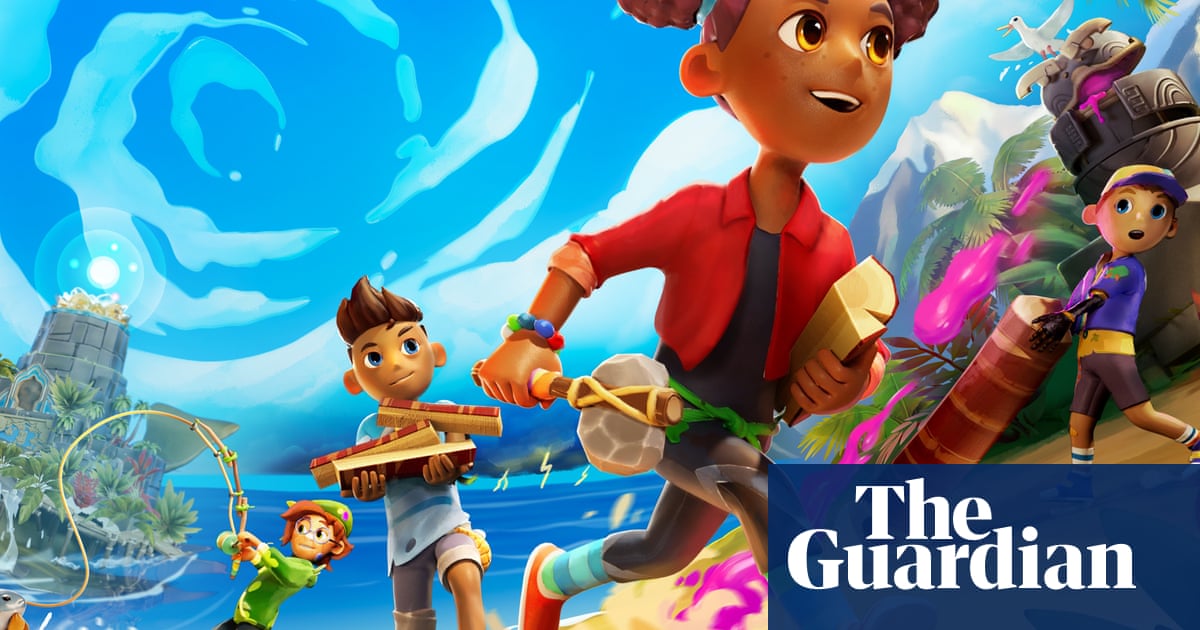The interesting thing about console launches is that you never know what unexpected treasures will emerge from the first batch of games. Who could have foretold that the hero of the PlayStation launch would be a fireworks simulation (Fantavision), or that the most joyous title in the initial GameCube lineup would involve simians racing each other in giant transparent globes (Super Monkey Ball)?
The latest example could well be Konami’s Survival Kids, the only new third-party game in the Switch 2 opening wave. It’s the latest in the publisher’s cult series of tropical island survival sims, which began on the Game Boy Color and, despite never really attracting vast global success, continued on to theNintendoDS under a new name, Lost in Blue. Now it’s back as a familyfriendly co-op survival adventure, in which groups of up to four players are shipwrecked on a mysterious archipelago, and must survive by gathering resources, crafting tools, finding food and exploring a series of lush, cartoonish environments. Four people can play online, but the game also supports Switch 2’s game sharing, which lets one person who owns the game connect wirelessly with other consoles to play together.
Andrew Dennison, who heads the game’s developer Unity, sees this as one of the Switch 2’s key features. “With splitscreen you have one machine rendering two different versions of the game,” he says. “With GameShare, we can compress one of those views and stream it … we render everything three times and push that out to two other consoles. As much as you can deep dive into tech specs, the benefits of GameShare are delightful. Other players in the same room as you don’t have to own the game, they don’t have to download anything … they can just turn on their Switch or Switch 2, push a button and they’re playing a game.”
Unlike survival titles such as Don’t Starve or Project Zomboid (or indeed Lost in Blue), there’s no mortal peril in Survival Kids. Running out of food hampers your progress, but you can’t actually starve; if you die, you just – respawn nearby. “We wanted to make sure the game was enjoyable for people at every skill level,” says Dennison. “It’s a balancing act – we don’t want to bore experienced gamers – but you can streamline gameplay challenge without simplifying to the point of making it irrelevant.” Due to the strict NDAs around the Switch 2 hardware, the developer couldn’t bring in many external testers to fine-tune the difficulty – so Dennison ended up testing the game on his nieces, and on the finance department.
Building tools is key – combine a vine and a stick and you get a fishing rod with which to lasso useful objects. Construct an umbrella and you can glide across wide canyons. There are no cumbersome item-inventory screens: when you need to build a tool or contraption, you can take what you need and drop it all into a bucket that magically spits it out. Tools are all stored at base camp, not in a menu, so that you can easily take a path home to pick up what you need.
As with Overcooked, Survival Kids is all about streamlined cooperation and carefully divvied-out tasks. Chopping wood and breaking rocks is faster with two people, so you need a physical labour team; meanwhile food provides the energy needed to climb cliff faces and carry heavy relics, so you’ll need a chef to gather plants and make dinner. “We really wanted people to go back and eat at the base camp together,” says Richard Jones, creative director for Konami Digital Entertainment. “This way, the base camp becomes a place to return to – a sort of communal kitchen.”
Sign up toPushing Buttons
Keza MacDonald's weekly look at the world of gaming
after newsletter promotion
Unlike most modern survival sims, it’s not totally open-ended: your aim is to discover more and more of the islands, which brings a sort of escape room feel to things. It’s also possible to go back and re-try levels to get a quicker time. Despite the family look and feel, there are some interesting and quite demanding physics-based challenges with multiple solutions. There’s a nice humour and lightness to the game as well, perhaps an inevitability considering that Dennison and many of the development team at Unity’s Stratford-upon-Avon office came from Codemasters and Rare.
Will Konami bring more of its classic titles to Switch 2? “We know there are other Konami teams who are interested in this platform – we’ll be able to help them,” says Jones. “So yeah, fingers-crossed we’ll see some more Switch 2 projects from Konami.” For now Survival kids feels like a great test case for the new console’s family oriented game sharing.
